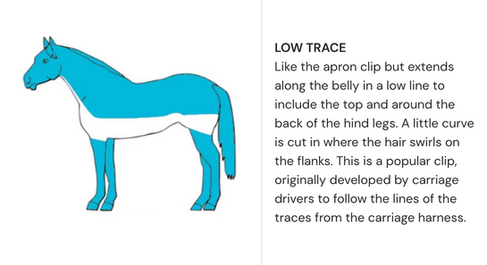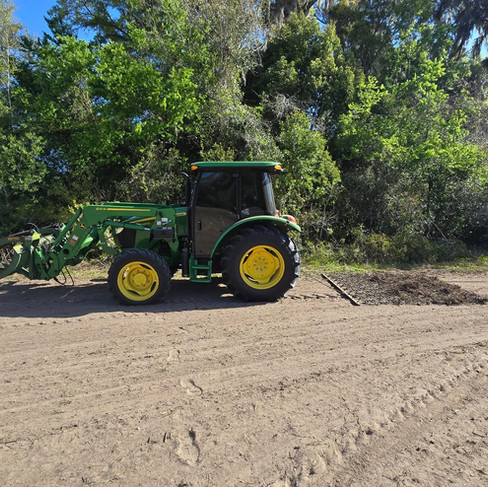2nd Quarter 2025
- stacylpearsall

- Mar 31
- 8 min read

TABLE OF CONTENTS


Our 2nd Quarter 2025 Members Meeting will be held on April 28, 2025, at 8:00 p.m. EST over Zoom.


AFTER ACTION SEASON 3
by Stacy Pearsall
The European Brabants of LowCountry Acres will feature prominently on Season 3 of After Action, set to roll out on PBS, Apple+, and Amazon Prime this October. After Action seeks to demystify the military experience, provide a platform for dialogue among family members and preserve military stories, many of which have, to date, been left untold. Check out what's in store for Season 3 below. And don't forget, you can catch up on Seasons 1 and 2 on PBS, Apple+, or Amazon Prime.
Episode 1: Return with Honor (October 6)
"Return with Honor" is a phrase commonly used by former prisoners of war, and the military, to signify the commitment to endure hardships and to maintain one’s dignity while captured by the enemy with the sole purpose of coming home with their character and reputation intact, even after facing difficult conditions in captivity. Essentially, it means to return home not just physically but also with one's honor preserved. Today I’m sitting down with three former POWs who have returned with honor, After Action.
Episode 2: From the Front (October 13)
Military leadership is crucial because it directly impacts the success of missions, troop morale, and overall effectiveness by providing clear direction, fostering trust through integrity, and enabling quick decision-making in high-pressure situations, ultimately determining whether a battle is won or lost; good leaders inspire members to follow them even under extreme circumstances, making leadership often the most critical factor in military operations. Today I’m sitting down with three veterans who know what it takes to lead during and After Action.
Episode 3: Homefull (October 20)
Today there are nearly 40,000 veterans who are homeless, and 1.5 million veterans who are considered at risk of homelessness due to poverty, lack of support networks, and dismal living conditions in overcrowded or substandard housing. That said, there’s nothing more important to a veteran’s long-term success than being able to call some place their home. Today, I am sitting down with three veterans who have faced housing insecurity, overcame adversity, and decided to help other veterans through their own struggles, After Action.
Episode 4: Boots to Badges (October 27)
While just six percent of the U.S. population has served in the military, veterans make up 25 percent of our nation’s police force. Since the military and law enforcement share a culture of discipline, teamwork, and leadership, many military veterans, regardless of their occupations in service, are drawn to law enforcement careers in agencies at all levels, from local to federal. In this episode, I sit down with three veterans who have chosen to exchange boots for badges, After Action.
Episode 5: Veteran Grown (November 3)
Historically, a large percentage of veterans live and work on farms across the US, but a recent census shows the veteran-farmer population has dropped 18% in just five years. Right now, the average veteran-farmer skews older, but that’s likely to change as younger vets are being drawn to the countryside. Whether because of government incentivization programs, or the solitude and healing farming brings, these veterans are cultivating their futures through agri-therapy. In this episode, I sit down with three veterans to see what life is like on the farm, After Action.
Episode 6: We Were There (November 10)
Though nurses could be male or female during the Vietnam War, most were dedicated young women who served in field hospitals or aboard medical ships where they treated combat injuries and consoled the wounded. Upon returning home, many of them faced hostile treatment, or had their service outright denied by civilians and, sadly, veterans alike. Because of that, they rarely spoke about their service. I am humbled to be joined by three veterans to discuss what life was like as a nurse in Vietnam and, After Action.
Episode 7: Warrior Tradition (November 17)
In the Native American culture, the warrior tradition often emphasizes courage, bravery, protecting the community, and demonstrating strength through acts of valor, with the concept of a "warrior" extending beyond just combat to include roles like providing for the family and upholding cultural values. Since 9/11, nearly 19% of Native Americans from among 573 federally recognized tribes serve in the military. Today I’m sitting down with three veterans who uphold the warrior tradition, After Action.


PREPARING YOUR BRABANT FOR SPRING
There are a few reasons why you might trace or body clip a shedding horse this spring. But ultimately, it boils down to your Brabant's comfort and health and how much of the winter coat remains. Take the weather and their work schedule into account, as well as what type of clip you are thinking, and if you can blanket as needed. You may not want to clip in March or April, as things get warmer and workload creates sweat and discomfort, is a good idea. Horse clipping in spring is a great way to help your horse be more comfortable.
You may also want to clip the shedding horse because the days have become too warm and your horse’s comfort needs some assistance! You don’t have to clip the entire horse, you can target areas with a bib clip, trace clip, blanket clip, hunter clip, or any combination of these.
A smooth hair coat also makes post-exercise skin care easier. If your horse is in heavy work, warmer spring days can create excessive sweat and rub marks around tack and the girth, and it is more likely to create issues on your horse’s skin. Sweat plus dirt trapped in hair can lead to rain rot or other skin funk. The girth area is also prone to girth itch, another skin problem related to the petri dish that sweat and dirt create.
Try not to clip your horse on the basis of what the calendar says. Clip your horse when their comfort and skin health can be improved, regardless of the time of year, and this will vary according to your location, your horse’s training routine, and how much hair they grow in winter.
Avoid clipping a dirty horse, as this can cause the clipper to catch and pull the horse’s skin. Also, ensure you use the right clipper blades for the horse’s hair coat. Lastly, don’t rush the process; take time and use appropriate techniques to avoid uneven or patchy results, which will always smooth out.
Clipping a shedding horse helps prevent overheating during exercise, promotes quicker drying after bathing, and makes grooming easier. It also allows the horse’s coat to grow back more evenly and helps identify skin issues early on.
TYPES OF CLIPS
WHAT A DRAG
Dragging pastures is a Spring ritual on many farms and ranches. Also known as harrowing or brushing in different localities, the process is meant to break up manure piles from the previous grazing season or from overwintered livestock. While dragging can certainly make the pastures look prettier, the real question is: “Does an economic benefit result from the practice?” In most cases, the answer is: “It depends.”
There are four main reasons generally put forward as rationale for dragging pastures:
Nutrient redistribution and release
Grass seed dispersion
Better uniformity of grazing
Parasite control
When to drag??? When temperatures climb above 90 degrees Fahrenheit with no rain for several days in a row, parasite eggs cannot survive!!! That makes it safe to skip the wheelbarrow and pitchfork and “drag” pastures with a harrow or length of chainlink fence to break up and scatter manure piles. Keep horses on a different pasture for a week to give the sun time to kill the larvae.
Conversely, dragging during cooler, wetter weather spreads viable parasite eggs around the pasture, contaminating the entire space rather than just the waste areas horses naturally tend to avoid.
If you’ve been dragging pastures year-round, resolve to instead pick up manure until summer arrives. Then feel free to drag when you get a span of hot, dry days.


CONDITIONING YOUR BRABANT FOR WORK
Conditioning your Brabant after a long break, such as winter, is important - especially if they haven't worked in harness or under saddle at all. Here is a program you can use to safely work your horse up to a healthy riding/driving condition:
Week 1: 30-minute ride/drive, 12.5 minutes walking, five minutes trotting, 12.5 minutes walking, flat terrain
Week 2: 30-minute ride/drive, 12.5 minutes walking, five minutes trotting, 12.5 minutes walking, varied terrain (hills).
Week 3: 30-minute ride/drive, 10 minutes walking, 10 minutes trotting, 10 minutes walking, flat terrain.
Week 4: 30-minute ride/drive, 10 minutes walking, 10 minutes trotting, 10 minutes walking, varied terrain.
Week 5: 30-minute ride/drive, 5 minutes walking, 10 minutes trotting, 5 minutes walking, 5 minutes loping, 5 minutes walking, flat terrain.
Week 6: 30-minute ride/drive, 5 minutes walking, 10 minutes trotting, 5 minutes waking, 5 minutes loping, 5 minutes walking, varied terrain.
Week 7: 45-minute ride/drive, 10 minutes walking, 15 minutes trotting, 5 minutes walking, 10 minutes loping, 5 minutes walking, flat terrain.
Week 8: 45-minute ride/drive, 10 minutes walking, 15 minutes trotting, 5 minutes walking, 10 minutes loping, 5 minutes walking, varied terrain.
If your Brabant develops soreness, back off the conditioning program until you determine the cause. You may need to replace your saddle or go bareback, make an appointment with the farrier, or call the vet. If you are training hard (five to six days a week) and your horse is generally sour but showing no signs of pain, they may be experiencing burnout. Reduce the number of days you work them each week or mix up their routine (ride/drive with friends, try a new trail, haul to a new location).
TIP: Some of our Brabant babies may be coming two, or coming three, this Spring but please keep in mind that our draft babies typically don't physically mature until roughly four years of age. When in doubt, an exam by your local vet, along with some x-rays, may help to ensure they're ready to start heavier work in the Spring!
HAPPY TRAILS

Spring is the perfect time to go outside and get some fresh air. One fun activity to do with Brabant horse is to go for a spring trail ride! This is a great way for you and your Brabant to build up conditioning and enjoy the view too.
As you stroll, notice the environmental transition from winter to spring. Look at all the beautiful, blooming flowers, the birds chirping, and the returning leaves forming on the trees. Plus, the warmer weather will allow for a more comfortable, relaxing ride. Our recommendation is to take a stroll in the early morning when the sun is rising or right as the sun is setting.
Do you have friends that own horses nearby? If yes, plan a trail ride together! You’ll be able to take in the beautiful scenery with your friend and both of your horses. We highly recommend looking into trails that include a waterfall, creek, or even a lake. Allowing the horse to walk into a shallow creek will add a new element of fun for both of you. Wherever you decide to go, make sure you check if the location charges a fee for using the trail, what type of riding experience is needed, and to see how far the trail runs. You, your friend, and the horses can all take a lunch break by the creek to embrace nature in a new location.
Don't forget, the EBRA now offers trail competitions so these fun excursions are great practice too!


GOT WORMS?
Have you heard of the New World Screwworm? The adult screwworm fly is about the size of a common housefly (or slightly larger), with orange eyes, a metallic blue or green body, and three dark stripes along its back. It gets its name from the behavior of its larvae (maggots) as they burrow (screw) into the wound, feeding as they go. The maggots (larvae) cause extensive damage by tearing at the hosts’ tissue with sharp mouth hooks. The wound can quickly become enlarged and deeper as more maggots hatch and feed on living tissue. Because they feed on live flesh, NWS maggots may burrow deep into wounds or openings, while other species of maggots may appear around the outer surface of the wound. In addition, even the smallest of wounds have the potential to attract flies, so it is imperative that you keep a close eye on your animals for any signs of wounds. Lastly, NWS infestations are a reportable disease! Immediately report any suspicious wounds, maggots, or infestations to a local accredited veterinarian, your State Animal Health Official, or a USDA veterinarian.






















































Comments